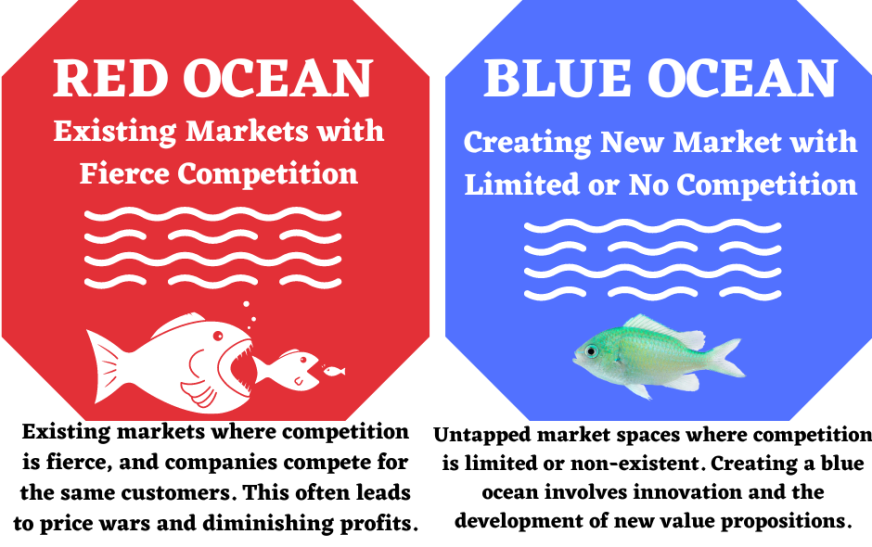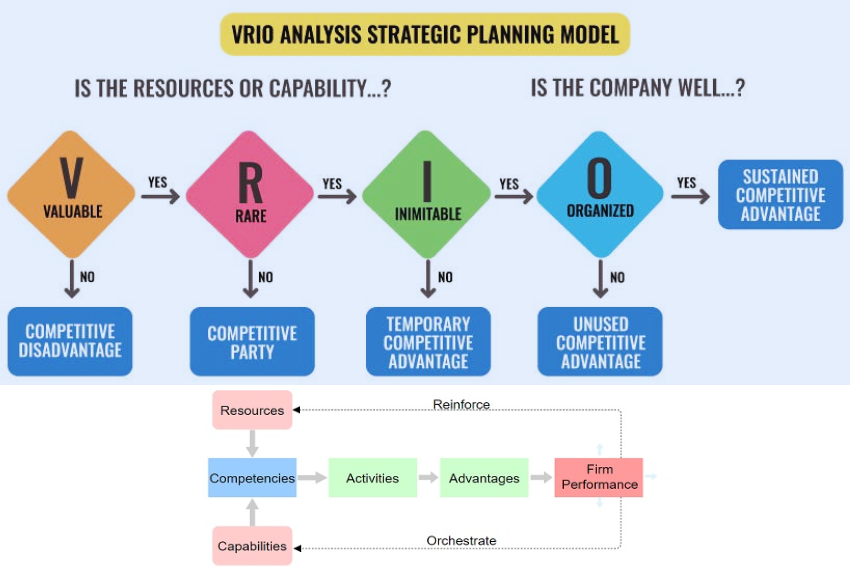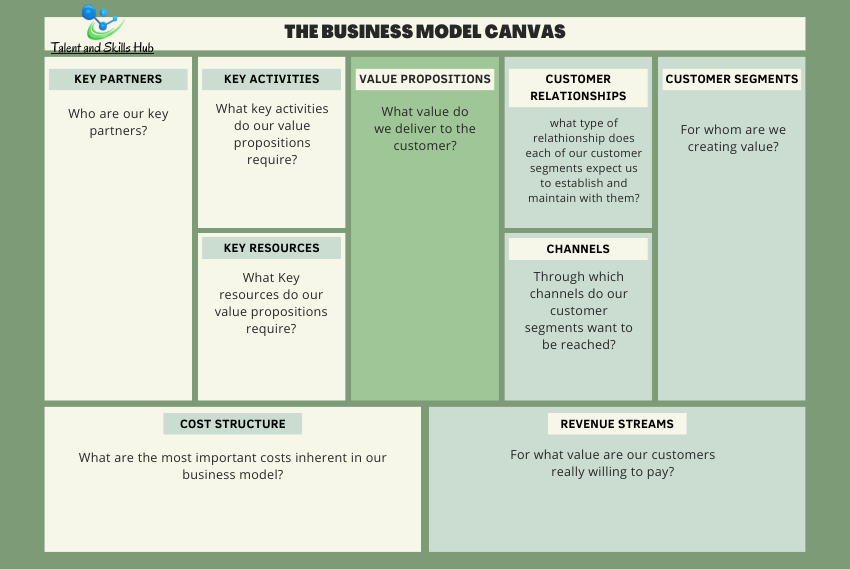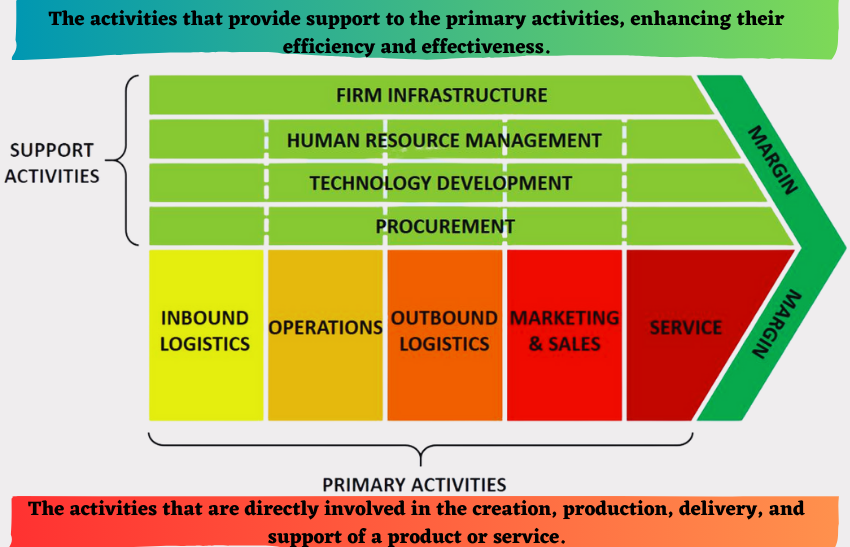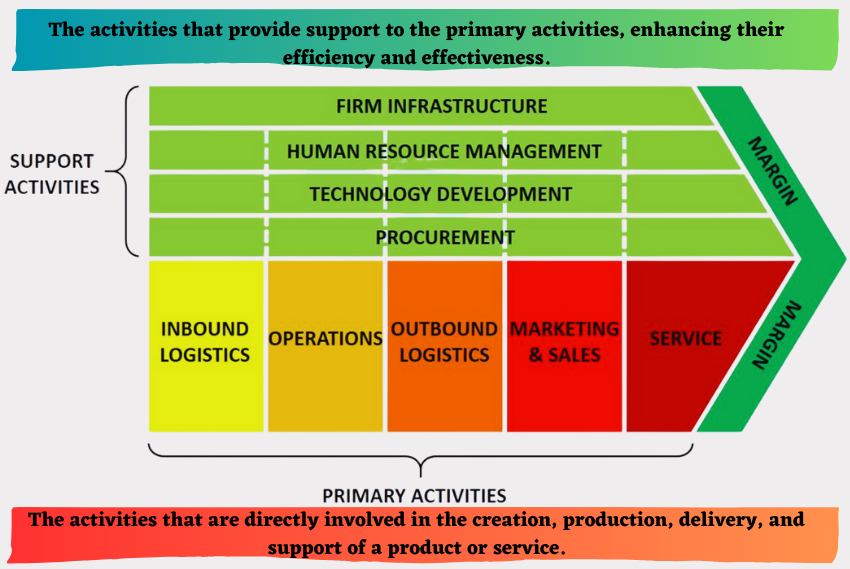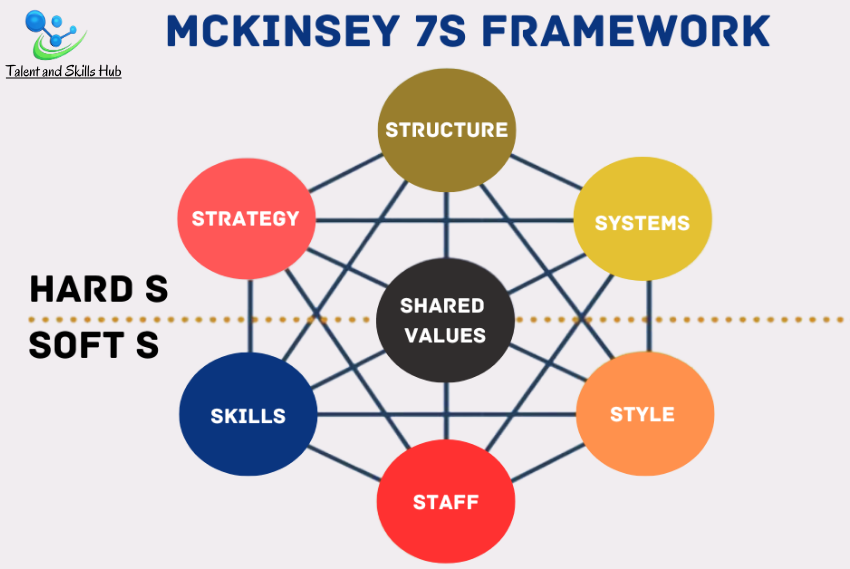Blue Ocean Strategy is a business strategy framework developed by W. Chan Kim and Renée Mauborgne, professors at INSEAD. It was introduced in their book “Blue Ocean Strategy: How to Create Uncontested Market Space and Make the Competition Irrelevant,” published in 2005. The framework encourages organizations to move away from intense competition in existing markets (“red oceans”) and instead focus on creating new, uncontested market spaces (“blue oceans”).
Key principles of Blue Ocean Strategy include:
- Red Oceans vs. Blue Oceans:
- Red Oceans: Represent existing markets where competition is fierce, and companies compete for the same customers. This often leads to price wars and diminishing profits.
- Blue Oceans: Denote untapped market spaces where competition is limited or non-existent. Creating a blue ocean involves innovation and the development of new value propositions.
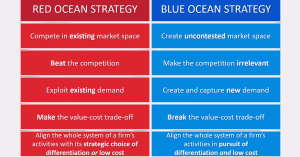
- Value Innovation:
Value innovation is central to Blue Ocean Strategy. It involves simultaneously pursuing differentiation and cost leadership to create a leap in value for both the company and its customers.
- Four Actions Framework:
The strategy encourages companies to consider four key actions to create a blue ocean:
- Eliminate: Identify factors that can be eliminated from the industry’s standard.
- Reduce: Reduce investments in areas that don’t add significant value.
- Raise: Enhance aspects that can be raised above industry standards.
- Create: Introduce new features or elements that the industry has never offered.
- Focus on Non-Customers:
Blue Ocean Strategy encourages companies to look beyond existing customers and consider non-customers who may be brought into the market with a new value proposition.
- Visualizing Strategy:
The Strategy Canvas is a visual tool that helps companies understand and compare their current position in the market with that of competitors. It aids in identifying areas for differentiation and innovation.
Blue Ocean Strategy has been widely adopted by businesses seeking to break away from competition and create new market spaces. It’s applicable to various industries and can be a powerful approach for companies looking to innovate and find new avenues for growth.
WATCH THE VIDEO HERE >>>
Steps to Implement Blue Ocean Strategy
Implementing Blue Ocean Strategy involves a systematic approach to innovation and strategic thinking. Here is a step-by-step guide on how to use Blue Ocean Strategy:
- Understand the Current Market:
Analyse the current market conditions, competition, and industry norms (the “red ocean”). Identify the factors that contribute to the existing competition and the limitations of the current market space.
- Identify Pain Points and Assumptions:
Understand the pain points of customers in the existing market. Challenge assumptions about what features or elements are essential in your industry.
- Explore Six Paths Framework:
Use the Six Paths Framework to explore alternative paths to innovation. These paths include:
- Look Across Alternative Industries: Identify industries that are related to or have parallels with your own. Explore how companies in these industries approach similar challenges and whether any successful strategies can be adapted to your industry.
- Look Across Strategic Groups within Industries: Analyse different strategic groups within your industry. These are groups of companies that pursue similar strategic paths or target similar customer segments.
- Look Across the Chain of Buyers: Examine the different stages in the buyer’s chain, from product design and production to marketing and distribution.
- Look Across Complementary Products and Services: Explore products and services that are complementary to yours. Consider whether integrating or bundling these offerings with your own can create a unique value proposition and open up new market opportunities.
- Look Across Functional or Emotional Appeal to Buyers: Assess the functional and emotional appeal that products or services provide to customers.
- Look Across Time: Consider how market trends and customer needs evolve over time.
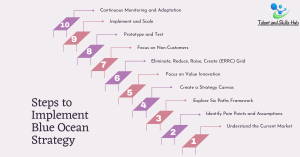
- Create a Strategy Canvas:
Develop a strategy canvas to visually represent the current state of the industry and how your offering differs from competitors. Identify key factors where you can differentiate and innovate.
- Focus on Value Innovation:
Aim for value innovation by simultaneously reducing costs and increasing value to customers. Identify areas where you can eliminate or reduce certain factors that are industry standards and areas where you can raise factors above the industry standard.
- Eliminate, Reduce, Raise, Create (ERRC) Grid:
Use the ERRC Grid to guide your strategic decisions.
- Eliminate: Identify factors that the industry has long competed on but can be removed.
- Reduce: Reduce investments in areas that don’t contribute significantly to value.
- Raise: Enhance factors that can be elevated above industry standards.
- Create: Introduce new factors or features that the industry has never offered.
- Focus on Non-Customers:
Look beyond your current customer base and consider non-customers. Identify reasons why they are not using existing products or services in the market and find ways to attract them with a new value proposition.
- Prototype and Test:
Develop prototypes or pilot programs to test your new value proposition. Gather feedback and iterate based on the responses from potential customers.
- Implement and Scale:
Once you have validated your blue ocean strategy, implement it on a larger scale. Invest in marketing and operational capabilities to bring your innovative solution to a broader audience.
- Continuous Monitoring and Adaptation:
Regularly monitor the market and customer feedback. Be prepared to adapt and evolve your strategy based on changing market conditions and customer preferences.
Final Remark
Blue Ocean Strategy is not a one-time event; it’s an ongoing process of innovation and adaptation. By consistently challenging assumptions, identifying new market opportunities, and delivering unique value, organizations can create and sustain blue oceans of uncontested market space.
Reference
Kim, W. C., & Mauborgne, R. (2005). “Blue Ocean Strategy: How to Create Uncontested Market Space and Make the Competition Irrelevant.” Harvard Business School Publishing Corporation.

